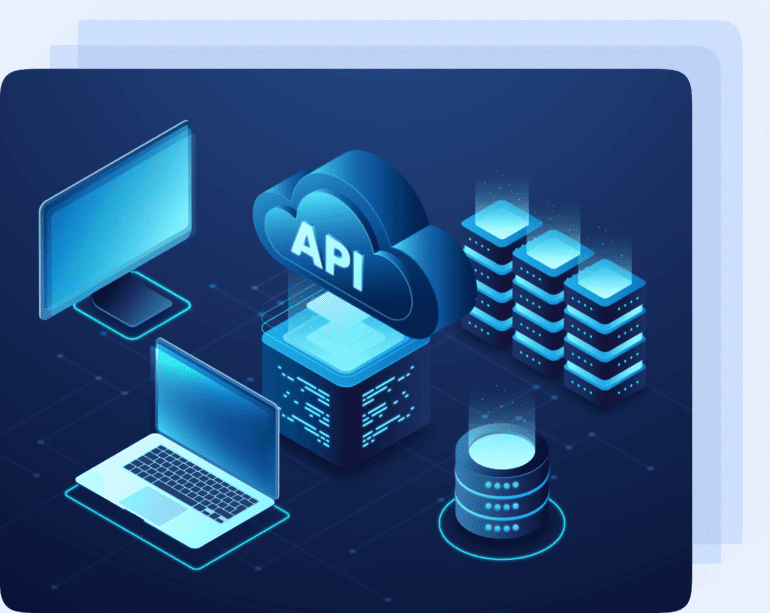TL;DR:
- Monster API’s platform democratizes the use of advanced machine learning models and techniques.
- It provides on-demand access to a globally distributed computing network of GPUs.
- The platform significantly reduces barriers to entry and costs for training and deploying AI models.
- Monster API offers APIs for natural language technologies and computer vision, along with pipelines for model training and hyper-parameter fine-tuning.
- The platform optimizes GPUs for machine learning and employs cost-effective techniques, resulting in remarkable cost reductions.
- Model fine-tuning is made accessible through a no-code solution, reducing expenses.
- Monster API’s distributed GPU network, optimization approaches, and fine-tuning capabilities enhance model accessibility and curation for enterprise applications.
- The platform’s impact extends to both garage developers and C-level executives, offering cost benefits and accessibility.
Main AI News:
Monster API, a groundbreaking platform, has recently launched, aiming to democratize the utilization of cutting-edge machine learning models and techniques. This innovative solution offers on-demand access to a vast pool of GPUs through a globally distributed computing network. By doing so, it effectively eliminates the barriers to entry and significantly reduces costs associated with training, refining, and deploying advanced statistical AI models, including the highly sought-after Large Language Models (LLMs).
Gaurav Vij, co-founder of Monster API, highlights the platform’s mission to democratize AI models, which were previously accessible only to large businesses capable of affording cloud-based GPU computing. “The cost of GPU computing has been prohibitively expensive,” says Vij. “Our approach revolutionizes this by providing developers and machine learning engineers with affordable access to GPU computing.”
The foundation of Monster API lies in its extensive array of GPUs, which are made available to users through the platform’s decentralized computing network. This network comprises hundreds of data centers and individuals worldwide, ensuring that customers can access as many GPUs as they require from various regions, including Europe, the United States, India, and more. With over 30,000 GPUs of different types at their disposal, developers can harness the power of these GPUs to tackle complex natural language technologies and computer vision applications.
Saurabh Vij, CEO of Monster API, emphasizes that the platform’s aim is not only to provide access to AI models but also to democratize the underlying compute infrastructure. By employing optimization techniques and making GPUs easily accessible, Monster API removes traditional inhibitors for developers and offers a level playing field. Saurabh adds, “We’re not just democratizing access to AI models; we’re democratizing access to the compute that powers those models.”
Monster API’s platform is built on Kubernetes and is container-native, ensuring efficient and secure operations. The orchestrator abstracts geographical concerns, allowing users to access resources seamlessly. Commercial GPUs, originally designed for gaming, are transformed into AI-ready models through a comprehensive package that incorporates containers, GPU drivers, libraries, and various frameworks for machine learning. To ensure utmost security, the platform incorporates five encryption protocols, multiple access control models, and container process and data level isolation.
One of the platform’s remarkable features is its extensive range of APIs, granting users access to cutting-edge AI models such as Whisper AI and Stable Diffusion. By optimizing consumer GPUs specifically for machine learning and employing model-specific optimization techniques, Monster API reduces the cost of training and deploying these models significantly. For example, Gaurav reveals that using Whisper AI for translation and speech-to-text transcription on AWS would typically cost around $45,000. However, with Monster API’s optimization methods, the same job can be accomplished for less than $3,000. This cost reduction is multiplied by the optimized model’s improved processing time and the already low cost of the GPU infrastructure.
Moreover, Monster API caters to the crucial aspect of model fine-tuning, which can often incur substantial expenses. The platform incorporates a no-code fine-tuning solution, allowing users to customize pre-trained foundational models using datasets from sources like Hugging Face. This efficient approach to fine-tuning models significantly reduces costs, enabling users to achieve tailored results for their specific datasets at a fraction of the usual expense.
Monster API’s impact goes beyond cost reductions. The platform’s distributed GPU network, optimization techniques, and fine-tuning capabilities offer enhanced accessibility, allowing enterprises to quickly acquire and refine models for their specific applications. This accessibility empowers both garage developers and C-level executives, enabling them to leverage the benefits of advanced machine learning without exorbitant costs.
Conclusion:
Monster API’s platform revolutionizes the market by democratizing advanced machine learning for businesses. The accessibility to GPUs and cost-effective optimization techniques significantly lower the barriers to entry, enabling developers and machine learning engineers to leverage cutting-edge AI models at a fraction of the cost. The platform’s ability to fine-tune models and its comprehensive range of APIs empower businesses to quickly obtain and curate models tailored to their specific needs. This level playing field, along with cost reductions and increased accessibility, paves the way for the widespread adoption of advanced machine learning techniques in the business world, benefiting both small-scale developers and high-level decision-makers.

